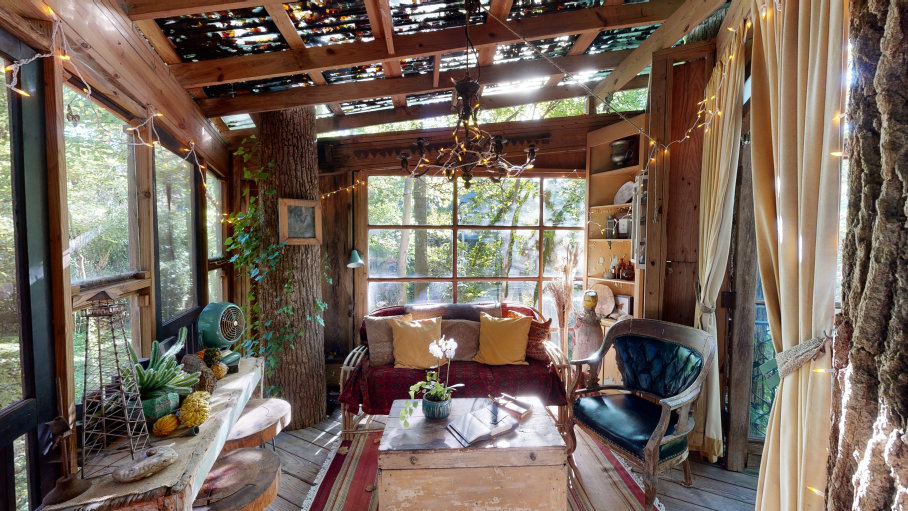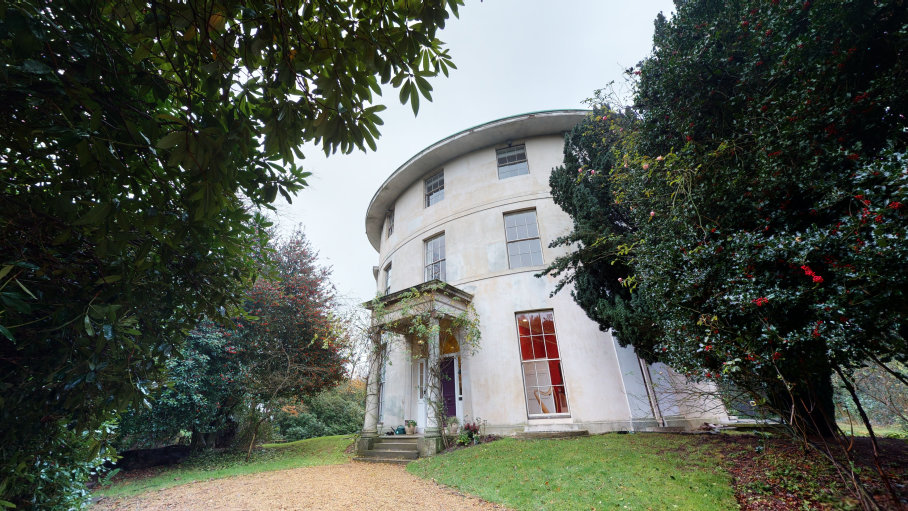Shooting for Success: 4 Real Estate Photography Tips That Will Give You a Competitive Edge
Mastering Real Estate Photography: 4 Proven Strategies to Elevate Your Listings and Outshine Competitors
The National Association of Realtors® 2023 Home Buyers and Sellers Generational Trends Report found that photos are the most useful listing feature for home buyers who look at online listings. With 96% of home buyers browsing the Internet for homes, photos had the highest favorability score compared to all other features across all age groups.
Real estate photography is a competitive niche. Agents either work with an in-house photographer, a professional photography company or take the photos themselves. Photographers need to differentiate themselves within the industry by becoming true real estate marketing partners to agents and home sellers. To achieve that level of partnership, photographers must embrace one of the most impactful real estate photography tips: to go beyond 2D photography and expand their services to include digital twins and other visual assets.
Common real estate photography types (and inspiring examples)
Location is the key, foundational factor for how photographers approach shooting real estate photography. Here are the four types of real estate photography you need to understand and have in your portfolio to successfully build your real estate photography business.
Residential real estate photos
The bulk of a real estate photographer’s portfolio consists of residential properties, such as single-family homes, condos/townhomes, and luxury properties. Listings typically have anywhere from 20-30 photographs that showcase the property’s unique qualities and provide a visual sense of what it’s like to live there. The quality of these photos has the potential to attract more buyers for the agent and move the listing off the market faster.

Hawaiian Oceanside Villa in Lanikai, Hawaii
Commercial real estate photos
Commercial real estate images for office buildings, hotels, and retail establishments focus on not just attracting potential companies to lease or buy a building, but potential employees and visitors who need to envision themselves in these spaces. These photos will also appear on company social media profiles and physical marketing materials, which impact and craft their respective brands and appeal.

Brass Monkey Bowling in Dubai, India Prepare to highlight any amenities for these social work spaces, such as parking lots, lobbies, landscapes, and any surrounding businesses. Businesses will use your quality images in marketing materials in order to motivate visitors to book at the hotel, visit the shop, or apply for a position with the company.
Architectural elements photos
Architectural real estate photography focuses on the property’s structure and unique characteristics, such as textural elements, symmetry, and lines. Real estate agents, architects, designers, and building owners use these photos for listings, marketing materials, and publications, like Architectural Digest and Dezeen.

“AirBnB’s Most Popular Treehouse” has been featured in over 300 articles and TV shows, including Architectural Digest and Condé Nast Traveler. Beyond structure, architectural photographs convey a sense of atmosphere, such as a home’s fun and sunny outdoor BBQ area or the cozy intimacy of a cabin, or capture pivotal points of a building’s design and construction.
Exterior real estate photos
Exterior photography highlights a property or location’s outdoor elements from multiple angles, including aerial street. Real estate agents desire these photos as a way to highlight the neighborhood and showcase the property with landscape views and illuminate any seasonality, such as a location with plenty of trees during autumn.

The Round House’s backyard, located in Romford, United Kingdom
4 tips to help real estate photographers stand out
To make the most of a partnership between professional real estate photographers, agents, and home sellers, these four real estate photography tips will help photographers stand out from their competitors.
1. Choose the right time of day
Natural lighting is the key ingredient for every type of real estate photography. Potential buyers for residential properties want to see how much natural light each room receives, so aim for late morning and early afternoon. Architectural and exterior photographs may focus on the atmosphere, so the timing may be the “golden hour” (1-2 hours before sunset) to translate the experience to visitors. Once you tour the property, make sure to recommend the proper time to your collaborators (home sellers, agents, etc.) to ensure they have availability to let you capture the property.
2. Plan the shot list
The shot list showcases your organizational expertise. Go over your plans for all interior and exterior locations, and give an estimate of how long you expect the process to take. You’ll also share any ideas you have for vignettes to ensure the listing has unique photographs that the agent can emphasize in the listing.
3. Make sure property staging is set
While staging responsibilities rely on the real estate agent and home seller, as a partner, you can collaborate on what you think looks best. Send a checklist to ensure the space is presentable and photo-ready. And when you walk through the space prior to shooting, you can assist with decluttering, check any window blinds to ensure natural light comes through, and ask about any personal pictures or art they may consider removing or blurring in edits.
You’ll also want to ensure that you have the right angle for each photograph and can follow the rule of thirds. A fruit bowl, light fixture, and open cabinet doors in a kitchen help separate a room into thirds so that each item falls into a vertical column and horizontal row to provide a semblance of balance to the space, which makes the room more appealing.
4. Expand beyond 2D photographs with virtual assets like digital twins
The need to provide virtual experiences for listings is clear for both real estate photographers and agents alike. According to our 2020 home buyer and seller survey, we found that 99% of home sellers believe virtual tours improve their competitive edge for their listing—and 90% of potential buyers are more compelled by virtual assets.
Beyond equipment, photographers can ensure consistency between their 2D and 3D photography (the scans that create the 3D virtual tour and virtual open house) by shooting both 2D and 3D photos at the same time of day from the same angle. The process saves real estate agents time from having to create these assets themselves so that they can focus on other listing elements, like the description and marketing plan.
Real estate photography equipment for every property type
Whether you’re an agent or photographer, the quality of your real estate photography relies on the quality of your equipment. Your camera acts as an extension of your high-quality standards of making the listing as appealing as possible. Many professional real estate photographers focus on ensuring their cameras deliver a high-dynamic range (HDR) and offer digital single-lens reflex (DSLR) capabilities, like quick shutter speeds, to capture the perfect picture at the right moment. But how can you ensure high-quality photographs and expand your services into 3D photography and virtual experiences without a long learning curve? This is where Matterport cameras come in—they enable photographers to accurately capture every property type, with the added benefit of rendering virtual assets that can be used across different listing platforms. Each property captured with Matterport includes:
high-quality 2D photographs
3D photograph renderings
digital twins that support photorealistic walkthroughs
a dollhouse view of the property
the ability to highlight property features using Mattertag annotations
Here’s a list of the equipment for real estate photography that helps make that happen with a simple “click” of a camera.
Mobile cameras for residential real estate photographs
When you pair your smartphone’s camera with the Matterport app, you can immediately walk through the property and take 2D photos. Pair your phone with the motorized Matterport Axis™ stand that spins the phone around the space to capture it with precision and ensure your 3D digital twin comes out from the same viewpoint with ultimate clarity.
Once the digital twin is available in the app, you can share it with the real estate agent, who can then add any labels, measurements, and descriptions to ensure a clear, personalized listing that will attract potential buyers.
360° cameras for residential real estate photographs
Ideal for small and medium spaces, our 360° cameras are portable, lightweight cameras with a range of high-quality pixelation that ensures you can quickly edit for any color temperature balance across your interior photography in post-processing.
Pro2 camera for residential property and crisp interior photos
With the single press of a button, our Pro2 camera single captures spaces with a photo resolution of 134 megapixels and implements white balance when used in full automatic mode to offer clear, naturally lit photos. With a long-lasting battery and fast shutter speed, you can capture multiple properties in a day without worrying about losing any time on a sunny day.
Pro2 or Pro3 cameras for commercial real estate photographs
The Pro2 camera is the perfect choice to track commercial real estate’s interior progress while in construction. The Pro2 delivers dimensional accuracy with each photo, which will be incredibly helpful in outlining marketing floor plans and determining space allocation when staging, either in person or virtually. The Pro3 camera shines in adaptability, as it delivers consistent, high-quality photos indoors and outdoors. Its ability to capture properties and the surrounding landscape with an ultra-wide angle will help create a digital twin that makes it easy to tour the entire building while highlighting the property’s surrounding amenities. Because the Pro3 offers an increased range, it’s ideal to use to photograph large resorts and hotels, factories, large retailers, airport terminals, and campuses.
Pro3 camera for architectural and exterior real estate photographs
The Pro3 camera LiDAR sensor and 12-elemental lens make it possible to capture architecture and exterior photographs regardless of low light or direct sunlight. The Pro3 quickly scans up to 100 meters away at less than 20 seconds per sweep, which results in true-to-life depth and accuracy for your 3D photos and digital twin.
Sixty-eight percent of photographers using Matterport cameras report that they’re more competitive in their market. Learn more about how much real estate photography costs so that you can accurately price your services, and check out our solutions for photographers when you sign up for an account today.
